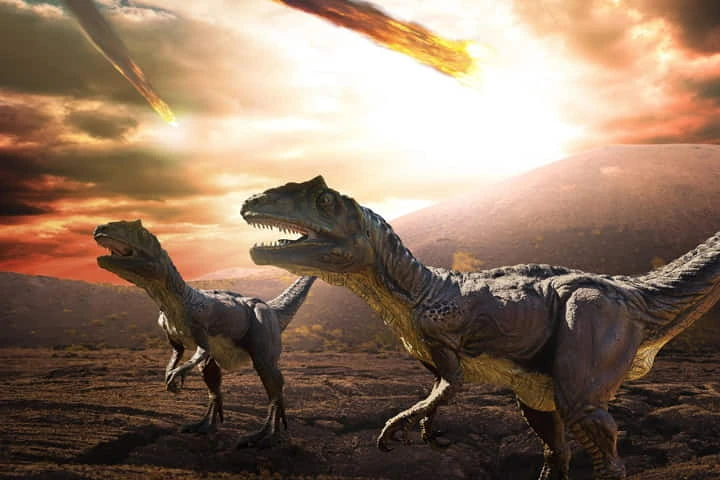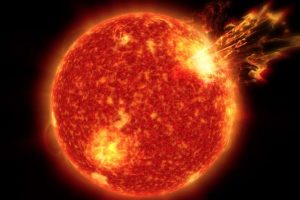Spring season is that time period in Nature when new life blooms and existing beings get renewed with fresh energy after a long period of winter. Yet this same spring 66 million years ago turned out to be the last season in the life of the mighty and majestic dinosaurs who dominated the Earth for centuries.
When a gigantic asteroid –10-kilomertre-wide – struck the Earth, it was the end for the complete group of non-bird dinosaurs and the living beings thriving on land and sea, as per a report in sciencenews.org.
Even though scientists have not been able to pinpoint the year, they now claim that in the Northern Hemisphere it was springtime.
This finding the researchers stated in their report published in Nature was based on their study of the bones of ancient fish buried in a place called Tanis situated in southwestern North Dakota.
Also read: Amazing story of Argentina’s dinosaur that had feeble arms but fearsome bite!
The identification of the season is relevant to understand the impact of the asteroid strike as it helps the scientist to understand and explain the survival of small mammals, birds and other beings. Take for example those animals who were active in the Northern Hemisphere spring after a long rest underground in the winters would have been more vulnerable. On the contrary in Southern Hemisphere autumn, animals would have been going in for a long nap and were probably more secure.
The sediments of Tanis found in 2008 reflect the deluge in the riverbed and other aspects of destruction that took place immediately after the Chicxulub impact took place 3,000 kilometres away in Yucatan Peninsula located in today’s Mexico.
In some of the fossilised Tanis fish gills there were small spherules stuck to them. Spherules are clumps of molten and vapourised rock that had been thrown in the sky from the asteroid impact. This shows that the fish were alive and breathing when hell broke loose.
Sharing his views, Thomas Holtz Jr., who is a vertebrate palaeontologist at the University of Maryland in College Park remarked: “These creatures died incredibly close to the moment that debris was coming down.” Holtz Jr. was not part of the study.
Interestingly, there are some fish bones which have features that are akin to a tree’s growth rings as they register the annual and seasonal growth cycles. When the band is thick it means healthy bone growth while thinner band reflects slow growth. There is also a line of arrested growth that indicates a lean period which could be winter or famine or drought.
In order to identify the season when the cataclysmic event took place, vertebrate palaeontologist at Sweden’s Uppsala University Melanie During, and colleagues scrutinised the bony spines from the pectoral fins of three sturgeons and jawbones of three paddlefish. All the six bones had outermost layers that characterised rapid growth that was yet to touch the peak growth rates that had been registered in earlier years’ growth cycles. This meant that the last growth season hadn’t reached the summertime peak when these fish were killed.
Also read: 240 million years ago, Tanzania’s ancient crocodile was the largest predator that roamed the planet
The study of the arrested growth lines showed that the fish had not suffered due to famine or drought at the time of their death. “By all indications, these fish were doing fine,” remarked During. Keeping all these aspects in view, the scientists feel that it points to spring time when the death of dinosaurs at least in the Northern Hemisphere took place.
Expressing his views on this study, Stephen Brusatte who is a vertebrate palaeontologist at the University of Edinburgh said: “I really do think this is a solid story backed by strong evidence.” He went on to add that the asteroid impact “would have turned a season that is normally about growth and flowering and rebirth into a time of unbelievable fire and fury.”
Brusatte was not involved in the study.




















